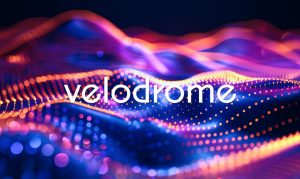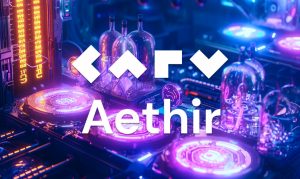Understanding Consumer Neural Interfaces: How They Work and What They Offer


In Brief
The consumer neural interface facilitates effortless communication between the human nervous system and external devices. In this article, we will explore the present and possible applications of the technology and its related challenges.
In March 2024, Noland Arbaugh showcased his ability to play chess solely with his mind. Despite eight years of living with paralysis, he acquired newfound capabilities, all thanks to a brain implant created by Neuralink, a company established by Elon Musk.
Mark Zuckerberg claims he’s already experimenting with this technology in a device designed to interpret your thoughts using wearable wrist technology.
The consumer neural interface, alternatively referred to as a neural interface system, stands as a groundbreaking technology with vast potential in the years ahead. This innovation facilitates effortless communication between the human nervous system and external devices.
What is Consumer Neural Interface?
At its core, a consumer neural interface connects the nervous system to the outside world. By leveraging the principles of neuroscience, these interfaces facilitate bidirectional communication, recording neural activity and providing appropriate stimulation when necessary. Consumer neural interfaces typically have three main components: a tissue interface, a sensing interface, and a neural signal processing unit.
The tissue interface serves as a crucial intermediary, interacting with neural tissue and enabling the transfer of signals. It may utilize innovative technologies such as neural probes or implants to establish a reliable connection. The sensing interface captures neural activity, employing advanced techniques like electroencephalography (EEG), electromyography (EMG), or optical imaging. Finally, the neural signal processing unit analyzes the recorded data and translates it into meaningful commands or stimuli that can be utilized by external devices.
Where is Consumer Neural Interfaces Used?
The potential applications of consumer neural interfaces are immense. One of the primary areas where this technology has shown significant promise is in medical treatments. Researchers are exploring using neural interfaces to assist individuals with sensory or motor disabilities, allowing them to regain lost functionalities. For instance, prosthetic limbs can be seamlessly controlled through neural interfaces, restoring dexterity and mobility to those in need. Moreover, neural interfaces have the potential to aid in treating neurological conditions such as epilepsy, paralysis, or even certain mental illnesses.
Aside from medical applications, consumer neural interfaces can revolutionize entertainment and gaming experiences. Imagine controlling virtual reality environments or video games using only your thoughts, eliminating the need for traditional controllers. This technology can potentially immerse users in a new level of interactive and intuitive gameplay, enhancing the overall entertainment experience.
Moreover, consumer neural interfaces have the potential, as previously noted with Neuralink, to drive groundbreaking progress in brain-computer interfaces (BCIs). BCIs have already made remarkable advancements, facilitating communication for paralyzed individuals by directly translating their thoughts into text or speech. The integration of consumer neural interfaces could further enhance accessibility to BCIs, ushering in a future where neural control of external devices is ubiquitous.
Neuralink
Neuralink Corp., an American neurotechnology firm established by Elon Musk in 2016 and headquartered in Fremont, California, is dedicated to advancing implantable brain-computer interfaces (BCIs). The company’s primary objective is to pioneer sophisticated technologies facilitating direct communication between the human brain and computers or other devices.
By 2024, Neuralink has achieved notable progress in its research and development endeavors. It has conducted its inaugural surgical trial of a brain implant and unveiled a device featuring “threads” connecting to the brain, roughly the size of a coin. This breakthrough heralds a new era in neural interface technology, signaling the commencement of clinical trials for this innovation.
In terms of innovation, Neuralink is actively developing “the Link,” an implanted neural chip aimed at interpreting and stimulating brain activity. The ultimate aim is to create a brain chip with the potential to address conditions such as paralysis, among other applications.
Neuralink’s ambitious vision for the future has captured widespread attention. Their pioneering work on brain-machine interfaces holds the promise of transforming numerous fields, spanning from medical treatments to human-machine interaction. With its secretive operations and intricate projects, Neuralink remains a subject of keen interest and speculation within both the tech and neuroscience circles.
Challenges
While the potential of consumer neural interfaces is immense, several challenges require attention. One significant challenge is ensuring the long-term safety and reliability of neural implants without causing tissue damage or immune responses. Robust cybersecurity measures must also be implemented to protect users from potential hacking or unauthorized access to their neural signals.
Ethical considerations also come into play, particularly regarding privacy and consent. As consumer neural interfaces become more advanced, the data collected from neural activity raises concerns about the potential misuse of personal information or invasion of privacy. Developing comprehensive guidelines and safeguards will be crucial to address these ethical dilemmas.
We can already monitor the users’ sentiment on X regarding neural interfaces going mainstream.
For Further Research
One of the comprehensive and recent pieces regarding Consumer Neural Interfaces is explored in “The Present and Future of Neural Interfaces” by Davide Valeriani, Francesca Santoro, and Marcello Ienca. This article thoroughly examines the current landscape and future potentials of neural interfaces, with a particular emphasis on neurotechnologies tailored for human rehabilitation, personalized usage, and cognitive enhancement. It anticipates a notable upsurge in the development and utilization of such technologies throughout the 2020s. The authors delve into the significance of innovative materials and algorithms in facilitating active brain monitoring and the development of biohybrid and neuromorphic systems adaptable to the brain’s dynamics.
Another great article is “Neural Interface Instrumented Virtual Reality Headsets: Toward Next-Generation Immersive Applications” by Raymundo Cassani, Marc-Antoine Moinnereau, Liviu Ivanescu, Olivier Rosanne, and Tiago H. Falk. In their article, the authors delve into the dynamic landscape of virtual reality (VR) and augmented reality (AR) applications, highlighting their resurgence across various domains, including entertainment and neurorehabilitation. Despite the immense potential of these technologies, users often grapple with motion sickness symptoms, commonly known as cybersickness, when utilizing VR headsets. The challenge of assessing users’ immersion perception and the quality of experience (QoE) in real-time presents a formidable hurdle for developers striving to create immersive content. Traditionally, subjective testing through questionnaires has been the go-to method for evaluating user experiences. However, this approach falls short, particularly in clinical settings such as phobia treatment and neurorehabilitation, where quantifying treatment success beyond subjective measures remains elusive. In light of these challenges, the article delves into the innovative integration of neural interface technology into VR headsets. By leveraging neural interfaces, the authors aim to revolutionize user experience assessment in immersive environments. This pioneering approach promises to overcome traditional methods’ limitations, offering real-time insights into users’ cognitive and emotional responses. Moreover, by enhancing the ability to gauge treatment efficacy in clinical applications, the integration of neural interfaces paves the way for developing next-generation immersive applications with unprecedented levels of user engagement and therapeutic potential. Through this exploration, the authors aim to catalyze advancements in immersive technology, ushering in a new era of immersive experiences that are both captivating and impactful.
Disclaimer
In line with the Trust Project guidelines, please note that the information provided on this page is not intended to be and should not be interpreted as legal, tax, investment, financial, or any other form of advice. It is important to only invest what you can afford to lose and to seek independent financial advice if you have any doubts. For further information, we suggest referring to the terms and conditions as well as the help and support pages provided by the issuer or advertiser. MetaversePost is committed to accurate, unbiased reporting, but market conditions are subject to change without notice.
About The Author
Zhauhazyn is a copywriter and sociology major. Fascinated by the intricate dynamics of Science and Technology Studies, she delves deep into the realm of Web3 with a fervent passion for blockchain.
More articles

Zhauhazyn is a copywriter and sociology major. Fascinated by the intricate dynamics of Science and Technology Studies, she delves deep into the realm of Web3 with a fervent passion for blockchain.














